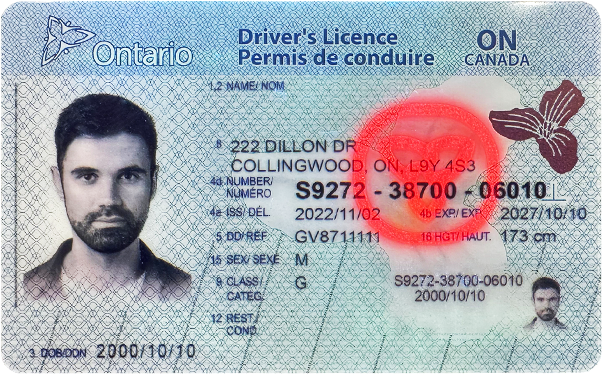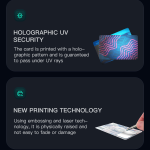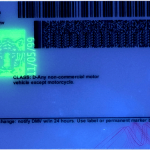The illegal production and use of fake driver’s licenses pose significant threats to road – safety and the integrity of the licensing system. Prosecuting cases related to fake driver’s licenses is a complex and challenging task for law – enforcement agencies and the judicial system. This article will explore the various challenges encountered in such prosecutions.
Identification and Detection Challenges
One of the primary challenges is accurately identifying a fake driver’s license. Counterfeiters have become increasingly sophisticated, using advanced technology to create fake licenses that closely resemble genuine ones. They may replicate security features such as holograms, watermarks, and microprinting to a high degree of accuracy. Law – enforcement officers need to be well – trained to spot the subtle differences between real and fake licenses, but even with training, it can be difficult to tell at a glance. For example, some fake licenses may have slightly off – color inks or minor variations in the font that are not immediately noticeable.

Another aspect of detection is the timeliness. In many cases, fake driver’s licenses are only discovered during routine traffic stops or in the course of other investigations. By then, the individual may have already used the fake license multiple times, and valuable evidence may have been lost or destroyed. Additionally, with the rise of digital driver’s licenses in some regions, new forms of digital forgery are emerging, which require different detection methods and technologies.
Proving Intent and Knowledge
Prosecutors must prove that the individual in possession of the fake driver’s license knew it was fake and intended to use it for illegal purposes. This can be a difficult burden of proof to meet. Some individuals may claim that they were unaware the license was fake, perhaps having been deceived by a third – party who sold it to them as a genuine document. For instance, a person may have been promised a “quick and easy” way to obtain a driver’s license by an unscrupulous agent, believing it was a legitimate service.
In other cases, the accused may argue that they only possessed the fake license for a short time and had no intention of actually using it. Prosecutors need to gather sufficient evidence, such as witness statements, communication records, or the individual’s past behavior, to establish intent and knowledge. However, obtaining such evidence can be challenging, especially if the individual has been careful to cover their tracks.
Supply Chain and Source Identification
Identifying the source of fake driver’s licenses and the individuals or organizations involved in their production and distribution is crucial for effective prosecution. However, these criminal networks are often well – organized and operate in secrecy. They may use encrypted communication channels and anonymous payment methods to avoid detection. For example, some counterfeiters may operate in underground workshops in remote areas or across international borders, making it difficult for law – enforcement to track them down.
Furthermore, the supply chain of fake driver’s licenses may involve multiple layers of middlemen and distributors. Each layer may have limited knowledge of the overall operation, making it hard to trace the flow of fake licenses back to the original source. Law – enforcement agencies need to invest significant resources in intelligence – gathering and international cooperation to disrupt these supply chains, but progress can be slow due to the complexity of the criminal networks.
Legal and Jurisdictional Issues
There are also legal and jurisdictional challenges in prosecuting fake driver’s license cases. Laws regarding fake driver’s licenses can vary from one jurisdiction to another. In some areas, the penalties for possessing or using a fake license may be relatively lenient, while in others, they may be more severe. This lack of uniformity can make it difficult to ensure consistent prosecution and sentencing.
Jurisdictional issues also arise when fake driver’s licenses are produced in one country and used in another. International cooperation is required to extradite suspects, share evidence, and coordinate legal proceedings. However, different legal systems, procedures, and levels of cooperation between countries can create significant obstacles. For example, some countries may have strict privacy laws that limit the sharing of information related to the case, while others may have slow – moving judicial systems that delay the progress of the prosecution.
Witness and Victim Cooperation
Securing the cooperation of witnesses and victims is essential in fake driver’s license prosecutions. However, witnesses may be reluctant to come forward for various reasons. They may fear retaliation from the individuals involved in the counterfeiting operation, especially if the criminal network is known to be violent or has a history of intimidating witnesses. Additionally, some witnesses may not see the importance of their testimony or may be concerned about the time and effort required to participate in the legal process.
Victims, in the context of fake driver’s license cases, may include individuals whose identities have been stolen to create fake licenses or those who have been affected by accidents caused by drivers using fake licenses. However, victims may also be hesitant to cooperate. They may be focused on recovering from their own losses or may be unsure of how their cooperation will benefit them. Law – enforcement agencies and prosecutors need to work hard to build trust with witnesses and victims and provide them with the necessary support and incentives to encourage their cooperation.
Common Problems and Solutions
- Problem: Difficulty in Identifying Fake Licenses at First Glance
Solution: Provide comprehensive and regular training for law – enforcement officers on the latest features of genuine driver’s licenses and the common signs of forgery. This training should include hands – on practice with real and fake license samples. Additionally, develop and distribute easy – to – use identification tools, such as handheld scanners that can quickly detect security features.
- Problem: Establishing Intent and Knowledge of the Accused
Solution: Prosecutors should conduct thorough investigations, including interviewing the accused’s associates, family members, and any potential witnesses. Look for evidence in the accused’s communication records, such as text messages or emails, that may indicate knowledge of the license’s illegality. Also, consider the accused’s past behavior and any prior convictions related to fraud or illegal document use.
- Problem: Tracking Down the Source of Fake Licenses
Solution: Strengthen international cooperation between law – enforcement agencies. Establish joint task forces and information – sharing platforms to combat cross – border counterfeiting. Invest in advanced intelligence – gathering techniques, such as using undercover agents and monitoring encrypted communication channels. Additionally, target the financial aspects of the counterfeiting operation by freezing the assets of those involved.
- Problem: Jurisdictional and Legal Inconsistencies
Solution: Advocate for the harmonization of laws regarding fake driver’s licenses at a national and international level. This could involve the development of model legislation that can be adopted by different jurisdictions. Establish clear protocols for cross – border cooperation, including streamlined extradition procedures and mutual legal assistance agreements.
- Problem: Lack of Witness and Victim Cooperation
Solution: Provide witness protection programs to safeguard the safety of witnesses. Offer incentives such as financial compensation or assistance in dealing with the aftermath of the crime for both witnesses and victims. Educate them about the importance of their cooperation in ensuring justice and preventing future crimes.
Fake ID Pricing
unit price: $109
| Order Quantity | Price Per Card |
|---|---|
| 2-3 | $89 |
| 4-9 | $69 |
| 10+ | $66 |



